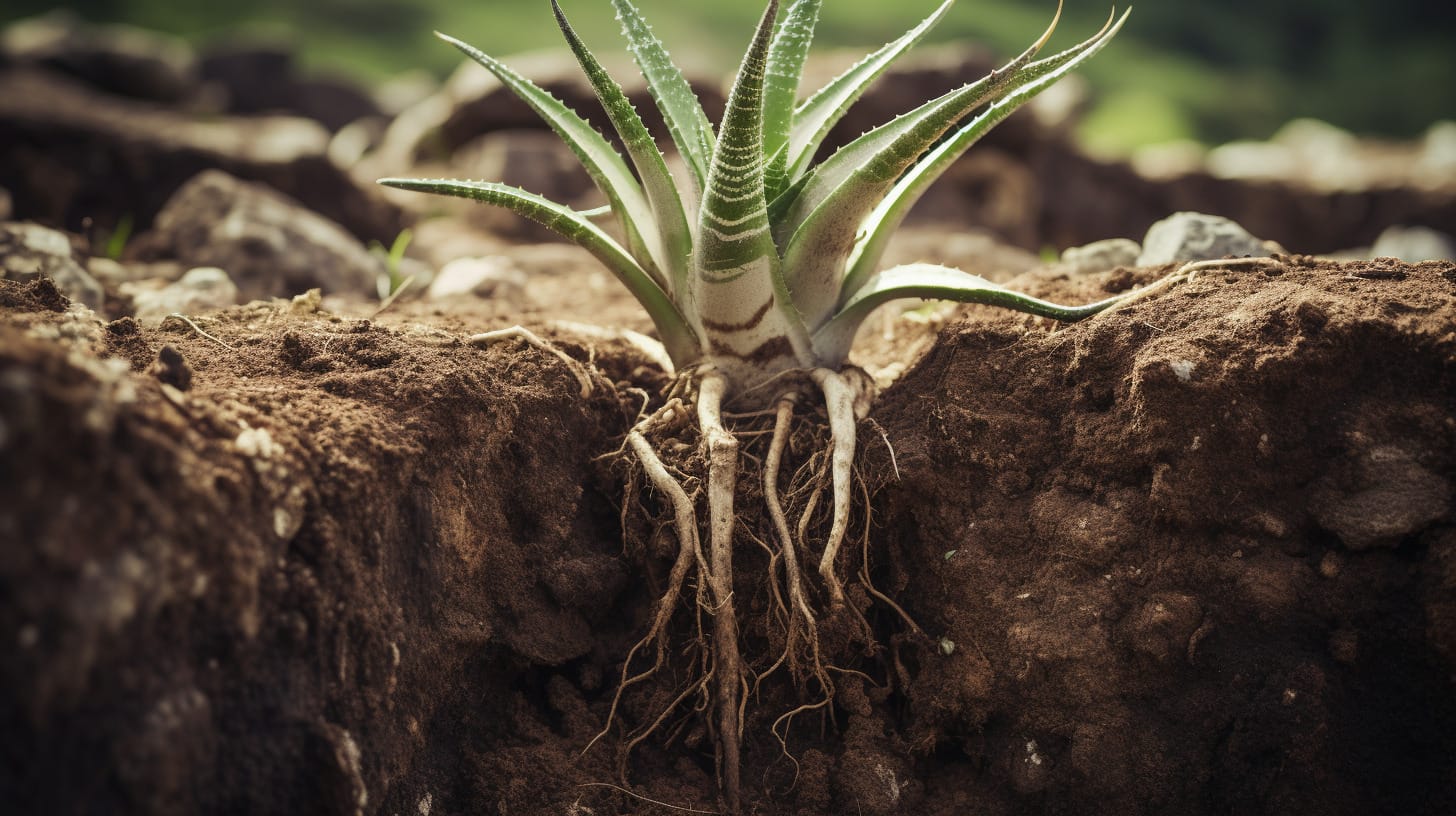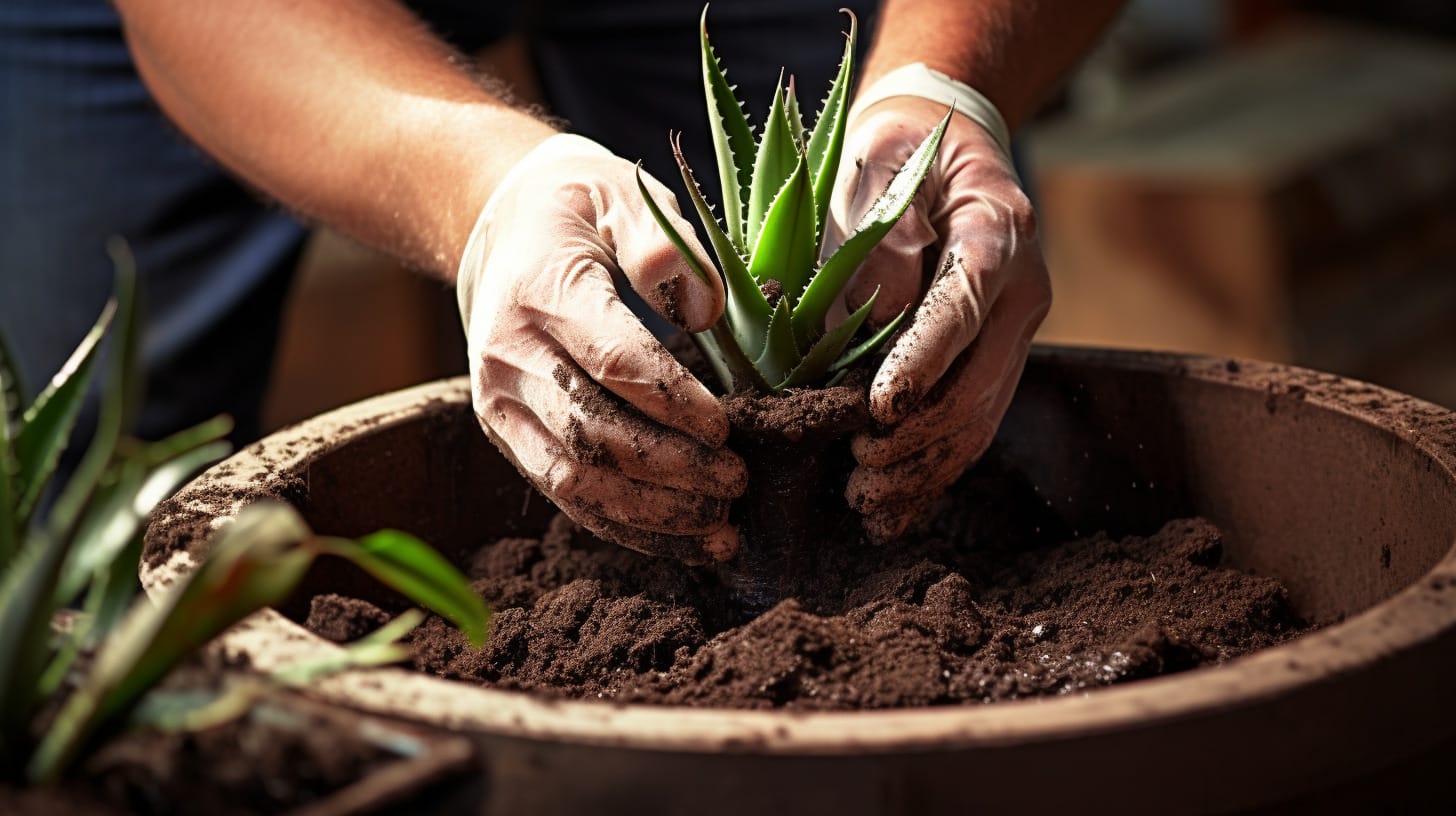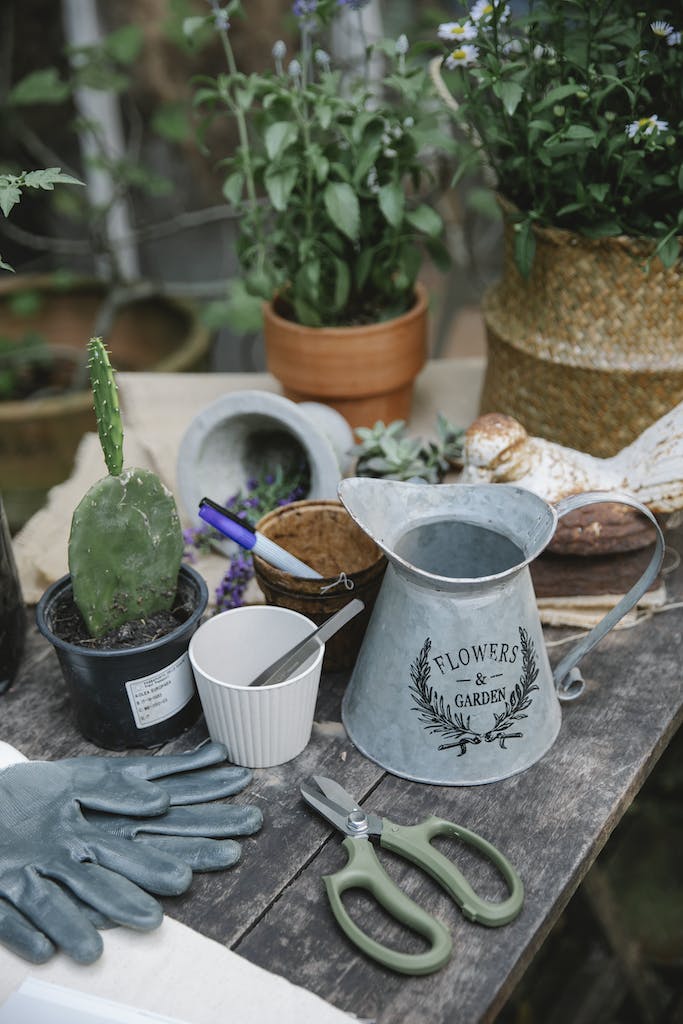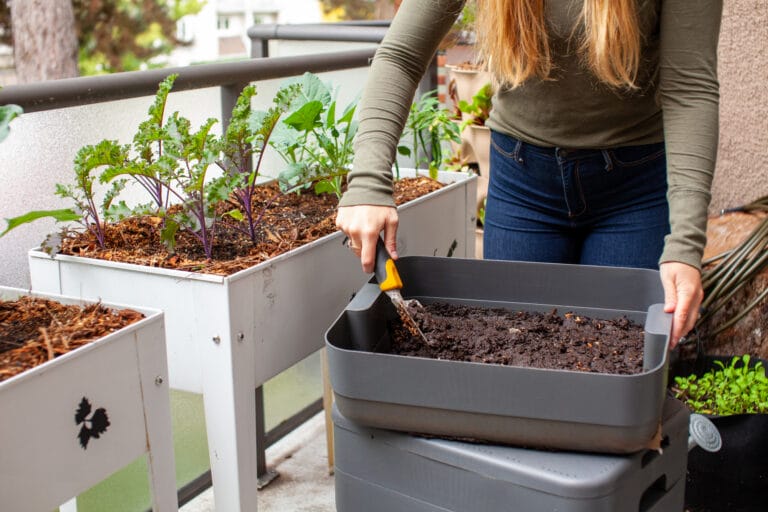While Aloe Vera may be known for its unique and visually attractive appearance, it’s widely recognized for its wide range of health and beauty advantages as well. The plant’s special, spike-like look doesn’t just provide a pleasing aesthetic, but its extensive application in health and beauty enhancements is greatly appreciated. Originating from the sun-soaked terrains of the Arabian Peninsula, this sunlight-admiring plant has found its way into homes around the world and has been used in numerous skincare products and natural health solutions. One of Aloe Vera’s major attractions is the simplicity of replanting it, giving admirers the continuous satisfaction of cultivating and relishing its copious benefits.
However, to truly let your Aloe Vera flourish, it requires more than just admiration from afar: diligent gardening and careful repotting are key. Whether you are a green-thumbed veteran or a novice looking to embark on a therapeutic journey, the idea of relocating your beloved Aloe Vera into another container may seem daunting. But fear not! The repotting process can be smoothly accomplished once we take the time to understand the steps involved. Let’s dive into the details together, ensuring that our resilient and radiant Aloe receives nothing but the best care!
Key Points
- Aloe vera plants are sun-loving succulents that originated from the Arabian Peninsula and are celebrated for their healing properties.
- Repotting aloe vera plants is necessary when the plant has outgrown its pot, the soil has become depleted, or pups (baby aloes) are developing around the base of the plant.
- Select a slightly larger container with drainage holes when repotting and use a well-draining soil mix specifically tailored for succulents.
- Following repotting, adjust your watering schedule to allow the roots to recover, and consider fertilizing once or twice a year to encourage healthy growth.
Understanding Aloe Vera
Aloe vera plants are succulents hailing from the Arabian Peninsula, revered for their healing properties and decorative appeal. Recognizable by their rosette-like formation of fleshy leaves and ability to produce flowers given the right conditions, Aloe Vera belongs to the Xanthorrhoeaceae family.
Their fibrous leaves house an inner gel composed of multiple beneficial compounds utilized in cosmetic and medicinal applications. As an indoor plant, Aloe Vera prefers to be positioned near south-facing windows or conservatories, providing ample sunlight.
It’s vital to familiarize yourself with the specific care requirements of these distinctive plants to ensure robust growth.
Tracing the Roots: The Origin and Characteristics of Aloe Vera
Originally from the Arabian Peninsula, Aloe Vera is a member of the substantial Xanthorrhoeaceae family. Many people mistake Aloe Vera for Agave plants due to their visual similarities, but these are two distinct plant species.
Aloe Vera is a succulent type that can grow stemless or with a short pseudo-stem. Its leaves boast shades of green and grey-green and feature sharp, tooth-like edges.
Once an Aloe Vera plant reaches three years of age, it may produce flowers in various shades of yellow, red, or orange! Not only are these plants easy to cultivate at home, but they also present myriad healing benefits.
Shining Light on the Ideal Location for Aloe Vera Growth
Aloe vera loves sunlight and thrives in locations that offer plenty of it. A south-facing window makes an ideal spot. But be wary – excessive direct sunlight can cause the leaves to turn brown. Maintaining a warm temperature between 20 to 25°C is recommended.
Aloe Vera also appreciates airflow around its roots, so pot cultivation is preferred. Consider bringing it indoors during winter to protect it from the cold. In such conditions, your Aloe Vera will prosper and develop sturdy roots!
Replanting Aloe Plants

When should you consider repotting your Aloe Vera plant, and why? Repotting becomes necessary when the plant begins to outgrow its current container, the soil mix has lost its productivity, or if pups (baby aloes) sprout around the base of the plant.
Repotting permits proper root expansion prevents overcrowding, and ensures the plant can continue to thrive in a healthy environment.
The Right Way to Choose the New Pot and Soil for Aloe Vera

Selecting the correct pot and soil for your Aloe Vera plant can significantly influence its health and growth. The dimensions and type of container will affect the plant’s development. At the same time, the soil mix will provide essential nutrients and adequate drainage.
Pot Size and Types: Fitting Your Aloe Comfortably
Selecting the right container size and type is important when repotting your Aloe Vera. The container size should be in accordance with the plant’s maturity and whether it will be divided.
Small pots serve well for aloe vera pups, while mature plants require larger containers. Shallow, wider pots are the best fit as Aloe Vera plants spread out horizontally rather than vertically. You can choose between plastic, clay, ceramic, or terracotta pots for the potting material.
Ensure that your chosen container has sufficient drainage holes to prevent root rot. Aloe Vera plants prefer mineral-rich soil that is low in humus, such as cactus or succulent soil.
Proper Soil Mix: The Groundwork for Your Aloe’s Success
Choosing the right soil for your Aloe Vera is crucial to its health and growth. Aloe Vera needs well-draining soil that can prevent excessive moisture, as it could lead to root rot.
A gritty and porous soil mix, specifically designed for cacti and succulents, is recommended for these plants. These types of soils promote drainage while preventing excess moisture from accumulating around the roots.
Commercial succulent mixes can be readily found at garden stores, or you can create your own by combining regular potting soil with sand or perlite to enhance drainage. Using the appropriate soil mix ensures a healthy balance of nutrients vital to your Aloe Vera’s growth.
Navigating the Process: A Step-by-Step Guide to Repotting Aloe Vera
To give your Aloe Vera plant a new home:
- Begin by carefully removing it from its existing container.
- Pay special attention to avoid damaging the delicate leaves.
- Gently shake off excess soil and examine the roots for signs of decay or pests.
If you notice any brown or black roots, use clean scissors to trim them before replanting. Additionally, separate any pups (baby Aloe plants) that may be growing at the base of the plant.
Find a new pot slightly bigger than the previous one, ensuring it has drainage holes at the bottom to prevent water from pooling. Fill approximately a third of the container with an appropriate potting mix, such as succulent or cactus.
Position your Aloe Vera in the center of the new pot. Add more soil until it reaches the base of the leaves. Gently press down on the soil to secure the plant’s position, taking caution not to compress it too much.
Finally, give your newly repotted Aloe Vera a gentle watering.
Taking Care: Tips for Aloe Vera Aftercare
After the repotting process is complete, continue to provide proper care to ensure the health and growth of your Aloe Vera. This comprehensive aftercare advice covers new watering techniques and possible fertilization tips.
Watering After Repotting
Post-repotting, adjust the watering schedule for your Aloe Vera plants. Allow them some days to settle before watering them again. This resting period allows the roots to heal, preventing potential root damage from excess moisture.
Remember, Aloe Vera plants prefer dry conditions and well-draining soil, so avoid overwatering them. It’s best to wait until the top inch of soil is completely dry before watering your newly repotted Aloe Vera plants.
What Are the Best Techniques for Repotting Aloe Vera Plants?
Repotting aloe vera plants is a crucial process for their overall health and growth. To begin, gather essential supplies, including a proper-sized pot, well-draining soil, and garden border with wood tutorial. Gently remove the plant from its current pot, ensuring minimal damage to the root system. Then, place it in the new pot with fresh soil, ensuring proper drainage. Follow the garden border with wood tutorial to create an attractive border around the plant for added aesthetic appeal. Finally, water the plant sparingly and provide adequate sunlight to encourage healthy growth.
Possible Fertilization
Although Aloe Vera plants do not need much fertilizer, a small amount of fertilization can be beneficial. Consider feeding your plants once or twice a year to help them thrive. The pups (baby aloes) can also benefit from fertilization to promote their growth.
When fertilizing your plants, follow the dilution rates and waiting periods as instructed on the fertilizer packaging to ensure proper application and effective growth promotion.
After mastering the effortless techniques of replanting aloe plants, you might be curious about other plants that bear a striking resemblance to aloe vera. Dive in to explore the fascinating world of plants that look like aloe vera!
Conclusion
Repotting Aloe Vera is essential to plant care that can greatly aid their growth and health. By choosing the right pot and soil mix, carefully conducting the repotting procedure, and providing adequate care after repotting, you can guarantee that your Aloe Vera will flourish for years to come.
So, go ahead and try your hand at repotting – your Aloe will thank you!
FAQs
How do I repot an Aloe Vera plant?
Gently lift the plant to remove it from the current pot. Use a mix of regular potting soil and cactus soil for the new pot. Position the Aloe in the pot and add soil around it until it is secure.
Why should I transplant my Aloe Vera?
A mature or large Aloe Vera might need transplanting when it overgrows its current container or if you want to grow aloe vera larger. Aloe Pups – baby aloes that sprout at the base of mother plants also benefit from transplanting to develop into healthy independent plants.
What type of care does repotted Aloe Vera require?
Keep your Aloe Vera away from direct sunlight indoors to avoid transplant shock, then allow it a few days to settle into its new environment before watering.
Can propagation of offsets aid in growing more Aloe Vera plants?
The pups, or offsets, are little baby aloes that grow off the parent plant. Once carefully removed and transplanted, these pups could grow into independent, healthy Aloe plants.
How should I deal with excess water after watering the Aloe Vera plant?
Drain off excess water, as standing water can lead to root rot, which harms both parent plants and pups. Aloe Vera plants prefer porous (water-draining) soils.
Should I apply any special feed on a newly repotted Aloe Vera?
While not required, applying diluted organic compost or occasionally high-quality all-purpose compost can nourish the overall growth of the potted Aloe Vera.







